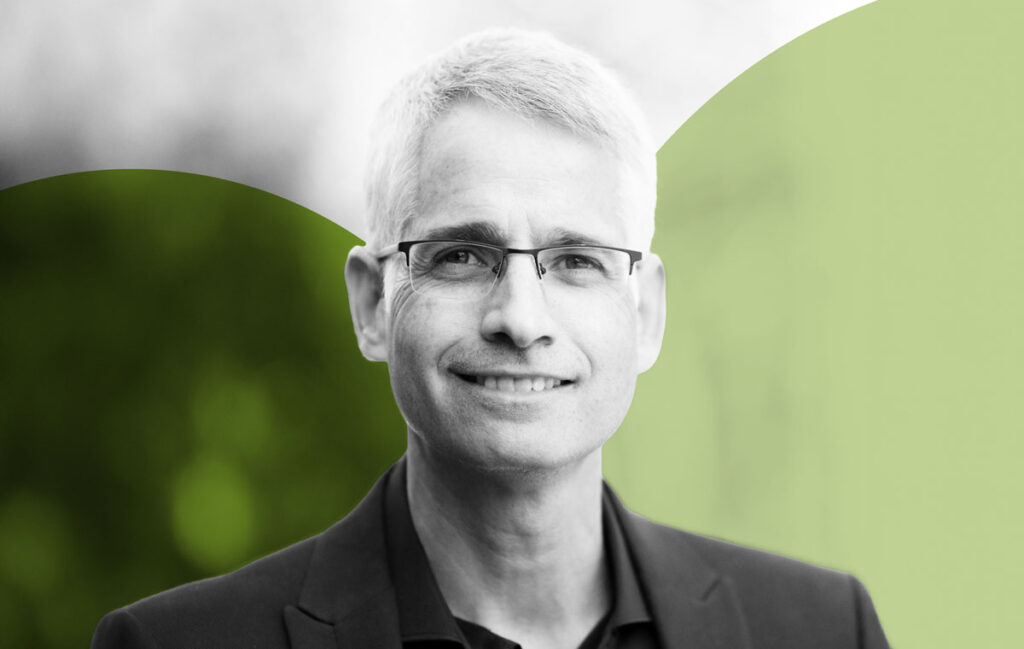With a background in physics, you switched to life sciences during your graduate studies. Can you tell us more about it?
I wanted to address climate change, which I consider the most pressing challenge of our lifetime and make an impact on environmental issues. Electrical engineering was not the most appropriate solution to this, so I transitioned into molecular and systems biology.
Fast forward twenty years or so, our lab tackles sustainability challenges from multiple avenues. One major focus is geared towards carbon fixation pathways in bacteria, teaching E. coli to feed itself with CO₂. Another key area of our work involves quantifying the global biomass of mammals and birds to better understand our impact on the biosphere. Ultimately, we are trying to create a holistic view of global biosphere and measure the profound changes driven by human activity during the age of the Anthropocene.
Can you tell us more about this? How is humanity’s impact on the biosphere measurable?
One of our current projects is leading a global census of birds – both wild and domesticated – by integrating diverse datasets to determine their relative biomasses. We found that the total biomass of domesticated birds surpasses that of wild birds, which opens up more avenues for both natural and social sciences on the Anthropocene. These figures help us better grasp ecological scales and dynamics, offering a powerful narrative about our impact on the natural world. We have conducted similar work on mammals, showing that domestic and human biomass vastly outweighs all wild species combined.
Recognising that these figures would otherwise be invisible, we have invested significant effort to translate this data into accessible and engaging formats. These visualisations have appeared in public exhibitions such as “Fixing Our Broken Planet” show at the Natural History Museum in London and have inspired collaborations with artists and educators. One project even inspired a new type of opera by artist Joana Moll based on our study comparing the weight of human-made objects to living biomass.
What motivates you to keep working with the public?
I am driven by curiosity and the joy of understanding the natural world through numbers. It feels like solving a complex, beautiful puzzle. This motivation led me to co-author Cell Biology by the Numbers with Rob Phillips, the Fred and Nancy Morris Professor of Biophysics and Biology at the California Institute of Technology. This book, freely available online, explores fundamental biological questions, such as how fast ribosomes work or how big is a mammalian cell. It has been used online by over a million people, beyond the 10,000 that bought the book, showing how helpful it is to give public access by authors.
Another highlight is a project, published in the EMBO Journal, that we nicknamed the “Rubisco Olympics.” Rubisco is the enzyme responsible for capturing CO₂ from the air, essentially serving as the gateway from inorganic to organic carbon. We synthesized different Rubisco variants from across the tree of life and tested their rate in a competitive framework. It was a fun and rigorous approach to address questions with real implications for climate and agriculture.
And ultimately, there is the mission itself. The topics we study, such as climate change, biodiversity loss and sustainability, are the most urgent challenges facing humanity. That is what keeps me going.
How has your engagement with EMBO shaped your work and what does its role mean for science in Israel and beyond?
EMBO has been a very special organization that facilitates interdisciplinary collaborations and meaningful connections. Just a couple of weeks ago, I returned from an EMBO workshop in Lisbon focused on harnessing biology for climate resilience. It brought together scientists from across the globe, Africa, Asia, Europe and the Americas. The diversity of perspectives led to incredibly rich and thought-provoking discussions.
What also stands out to me is the human dimension and the relationships with students and colleagues built through the EMBO Programmes. I find it deeply rewarding to connect with life scientists across the globe. These interactions often evolve into long-term friendships, scientific partnerships and ongoing sources of personal and professional inspiration.



